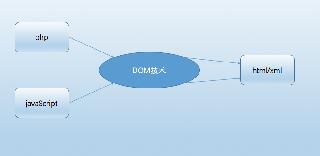python 實(shí)現(xiàn)兩個(gè)線程交替執(zhí)行
我就廢話不多說(shuō),直接看代碼吧!
import threadingimport timedef a(): while True: lockb.acquire() print(’a’) locka.release() time.sleep(0.5)def b(): while True: locka.acquire() print(’b’) lockb.release() time.sleep(0.5)if __name__ == '__main__': locka = threading.Lock() lockb = threading.Lock() ta = threading.Thread(None, a) tb = threading.Thread(None, b) locka.acquire() #保證a先執(zhí)行 ta.start() tb.start()
獲取對(duì)方的鎖,運(yùn)行完后釋放自己的鎖
補(bǔ)充知識(shí):線程同步——兩個(gè)線程輪流執(zhí)行python實(shí)現(xiàn)
看代碼!
import threadingimport timelockA=threading.Lock()lockB=threading.Lock()def printA(n): if n<0: return lockA.acquire() print('+++') lockB.release() time.sleep(0.1) printA(n-1)def printB(n): if n<0: return lockB.acquire() print('***') lockA.release() time.sleep(0.2) printB(n-1) lockB.acquire()t1=threading.Thread(target=printA,args=(10,))t2=threading.Thread(target=printB,args=(10,))t1.start()t2.start()t1.join()t2.join()
找實(shí)習(xí),又要回憶起操作系統(tǒng)的東西了。
思想:創(chuàng)建兩個(gè)鎖lockA和lockB。每次執(zhí)行完后,鎖掉自己的鎖,并釋放對(duì)方的鎖。
初始時(shí),若A先運(yùn)行,則釋放A的鎖,鎖住B的鎖。
以上這篇python 實(shí)現(xiàn)兩個(gè)線程交替執(zhí)行就是小編分享給大家的全部?jī)?nèi)容了,希望能給大家一個(gè)參考,也希望大家多多支持好吧啦網(wǎng)。
相關(guān)文章:
1. Ajax對(duì)xml信息的接收和處理操作實(shí)例分析2. Jsp中request的3個(gè)基礎(chǔ)實(shí)踐3. Ajax返回值類型與用法實(shí)例分析4. XML入門精解之結(jié)構(gòu)與語(yǔ)法5. 如何使用CSS3畫出一個(gè)叮當(dāng)貓6. ajax處理php返回json數(shù)據(jù)例子7. Java 如何解析key為動(dòng)態(tài)的json操作8. 在python下實(shí)現(xiàn)word2vec詞向量訓(xùn)練與加載實(shí)例9. ASP如何檢測(cè)某文件夾是否存在,不存在則自動(dòng)創(chuàng)建10. ASP.NET Core 5.0中的Host.CreateDefaultBuilder執(zhí)行過(guò)程解析

 網(wǎng)公網(wǎng)安備
網(wǎng)公網(wǎng)安備